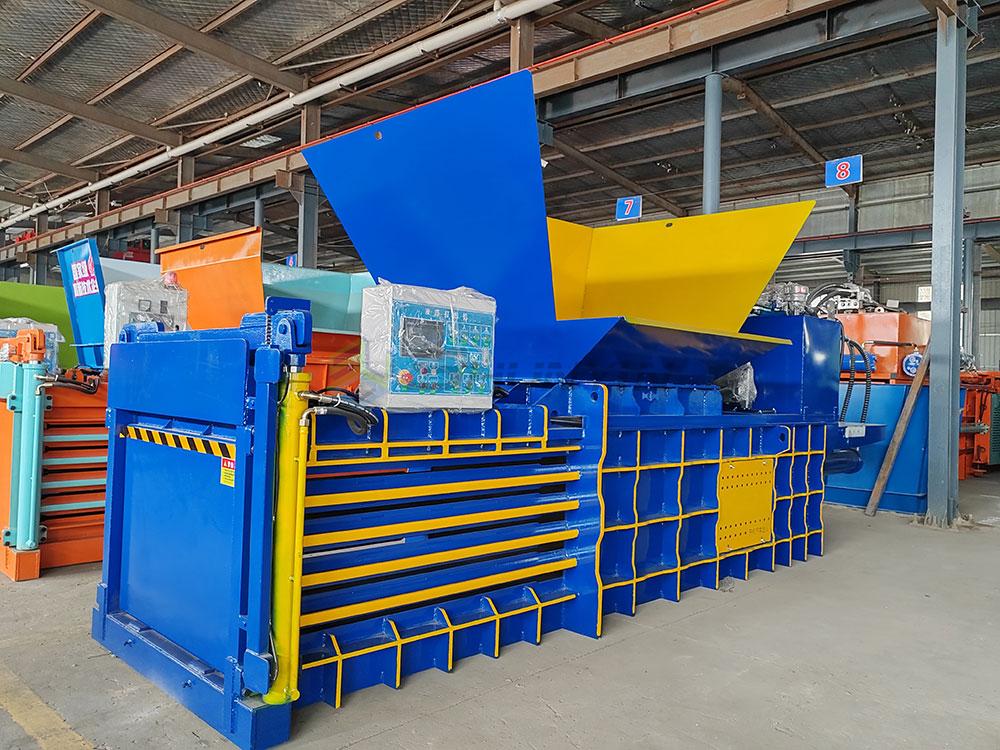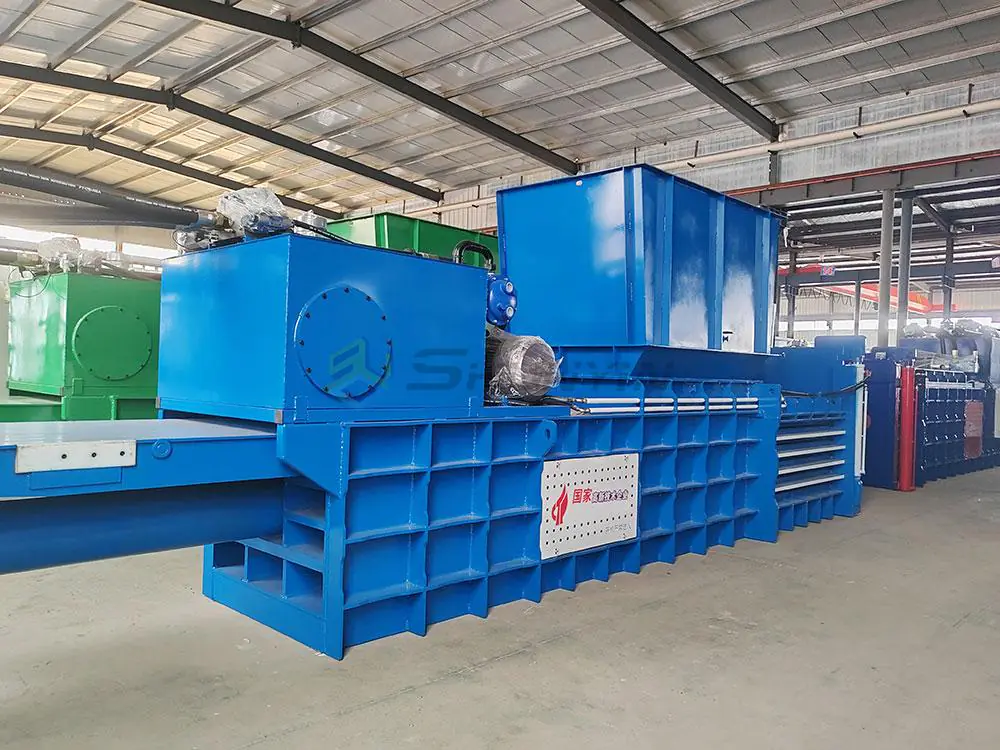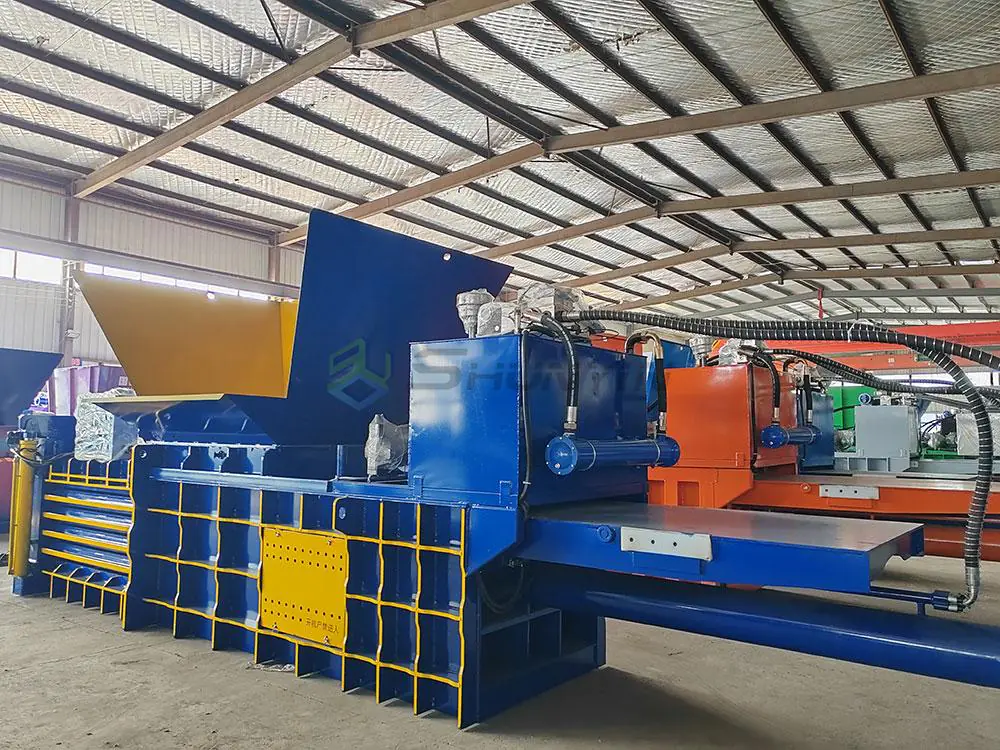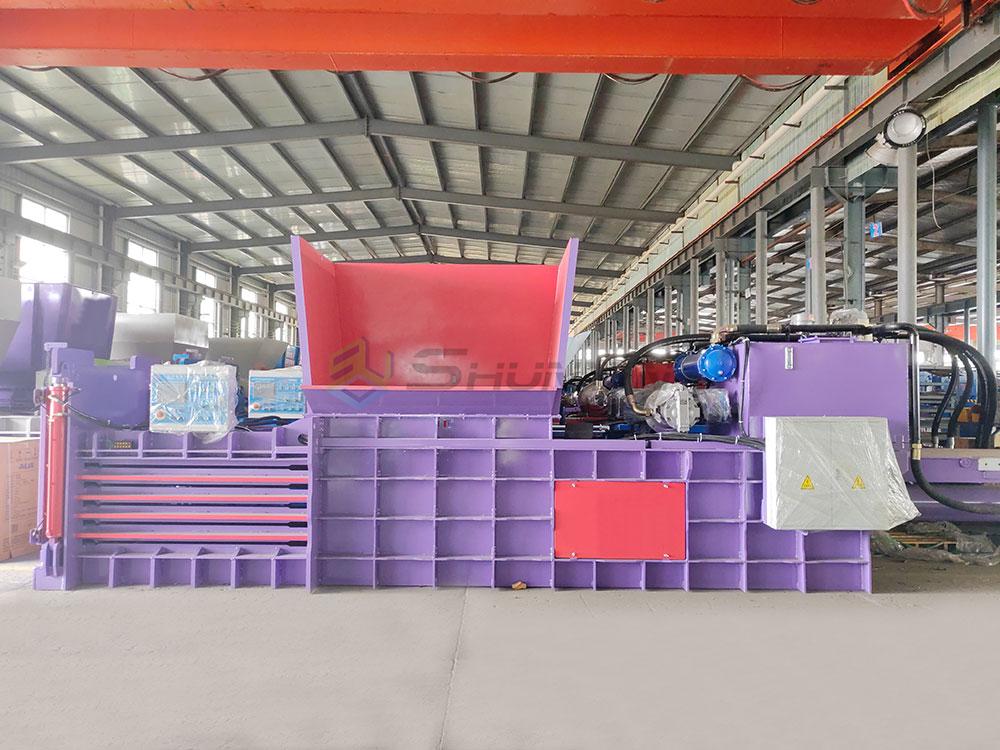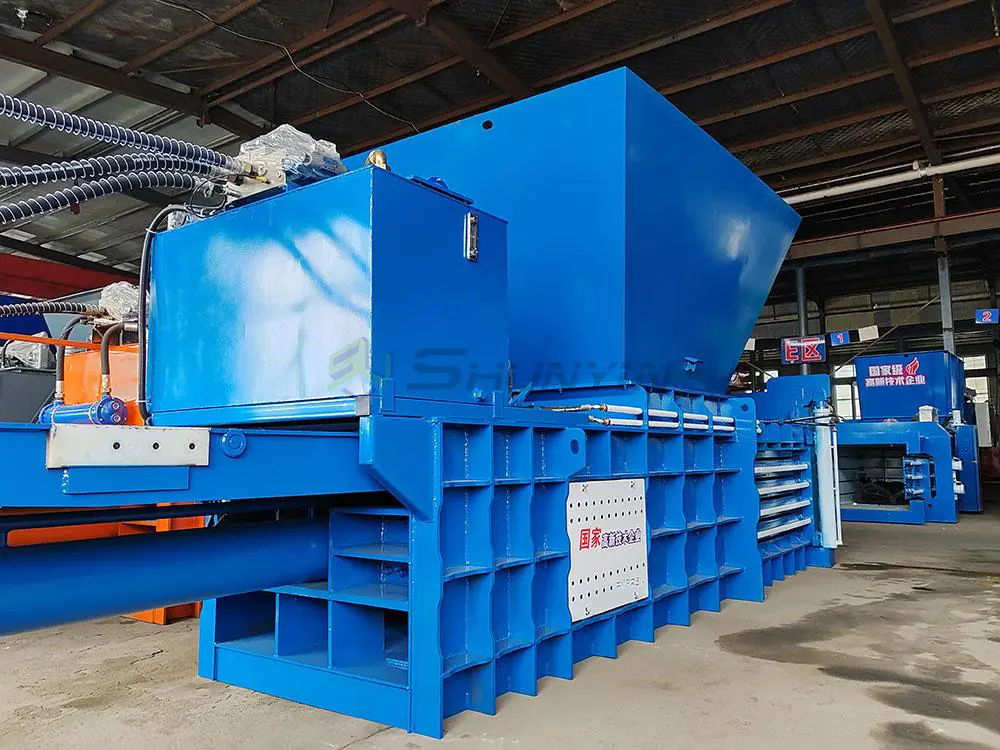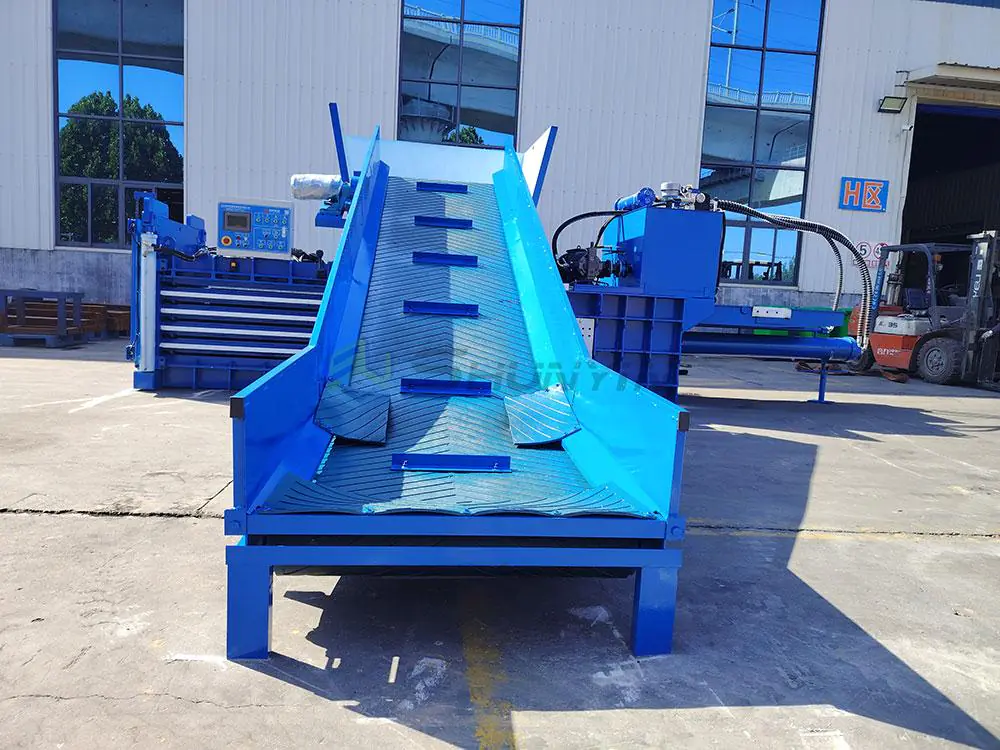
A Michigan recycler lost $47k annually by using 60-ton balers for mixed paper – until switching to 42-ton models better matched to material resistance. Tonnage choice makes or breaks profitability.
Selection Formula: Required Tonnage = (Material Density kg/m³ × Compaction Ratio) +25% Safety Margin. For waste paper: 40-120 ton models (avg 62 ton) handle 10-40 tons/day throughput, achieving 450-680 kg/m³ bale density via 14-28 MPa pressure systems.
Let’s decode how material type, contamination levels, and automation needs dictate optimal baler sizing.
What Size Cardboard Baler Do I Need?
A French supermarket chain optimized 34% transport costs by rightsizing from 80-ton to 55-ton balers. Match compression force to material specs.
Tonnage-to-Material Chart:
| Material Type | Recommended Tonnage | Cycle Time | Daily Capacity |
|---|---|---|---|
| OCC (Single Wall) | 45-55 tons | 16-22 sec | 18-24 tons |
| ONP/Grade 56 | 28-35 tons | 12-15 sec | 12-18 tons |
| Mixed Paper | 60-75 tons | 18-28 sec | 22-30 tons |
| Contaminated Bales | 80-110 tons | 34-42 sec | 8-14 tons |

Advanced Capacity Calculation
Daily Throughput Formula:
(Cycle Time in sec ÷3600) × Operational Hours × 0.85 Efficiency = Tons/Shift
Case Example:
55-ton baler:
- Cycle: 18 sec
- 16 hr operation:
(18/3600)×16×0.85 = 6.8 tons/shift
→ 22.7 tons/day (3 shifts)
Upgrade Trigger:
When daily waste exceeds machine capacity ×1.3 for >45 days/year
What Is the Difference Between a Bailer and a Baler?
An Australian company wasted $12k in Google Ads targeting "bailers" – understand semantic nuances that impact procurement.
Terminology Comparison:
| Aspect | Bailer | Baler |
|---|---|---|
| Definition | Removes water from vessels | Compacts recyclables |
| Key Parts | Hand pump | Hydraulic cylinders |
| Pressure | <1 psi | 14-28 MPa (2000-4000 psi) |
| Cost | $15-$300 | $18k-$250k |

SEO Misfire Analysis
Costly Confusion Data:
- 38% of "bailer machine" searches actually require balers
- Wrong keyword bidding wastes $6-18 per click
- 23% supply contracts include incorrect terminology
Protection Measures:
- Use ISO 3409 terms in RFQs
- Specify "hydraulic compaction" in specs
- Require manufacturer certificate of terminology compliance
What Is a Baler in Waste Management?
A Dubai smart recycling plant integrated balers with AI sorters to boost paper purity from 88% to 97.3%. See their expanded role.
| Function | Traditional Role | Smart System Benefit |
|---|---|---|
| Material ID | Manual sampling | Real-time polymer analysis |
| Quality Control | Post-compaction checks | In-process density scans |
| Data Tracking | Paper logs | IoT-enabled output metrics |
| Maintenance | Schedule-based | Predictive analytics |

Industry 4.0 Implementation
Technical Requirements:
- Ethernet/IP connectivity
- OPC UA protocol support
- ≥94% sensor accuracy (LiDAR/NIR)
- Edge computing capability
ROI Metrics:
- 39% reduction in quality claims
- 28% longer component lifespan
- 17% higher bale market value
Where Are Bramidan Balers Made?
A Norwegian recycler paid 43% premium for Bramidan’s Danish-assembled balers – but saved $62k in 5-year TCO. Understand geo-production impacts.
Bramidan Production Map:
| Component | Origin | Quality Standard |
|---|---|---|
| Hydraulic Cylinders | Sweden | ISO 6022 |
| Control Systems | Germany | EN 61439 |
| Frame Assembly | Denmark | FEM 1.001 |
| Final Testing | Norway | NORSOK Z-014 |

Total Cost Analysis (10-Year)
| Chinese | European | Bramidan | |
|---|---|---|---|
| Purchase | $92k | $167k | $228k |
| Maintenance | $108k | $73k | $51k |
| Energy | $186k | $159k | $132k |
| Resale | $14k | $29k | $47k |
| Total | $372k | $370k | $364k |
Strategic Choice:
High-volume plants (>30 tons/day) save with Bramidan after 4 years
Mid-size operations benefit from Chinese 72-ton models
Conclusion
Choosing horizontal balers requires matching three variables:
1) Material Resistance (Measured in kN/m²)
2) Contamination Profile (Metal/plastic % in waste stream)
3) Automation Level (PLC generation & sensor suite)
-
Exploring smart baler capabilities can reveal innovative solutions that enhance recycling efficiency and material quality. ↩


